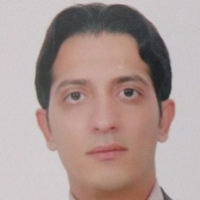Reconstruction of the palaeoenvironment using biomarkers and clay mineralogy in loess deposits of northern Iran
Author(s):
Abstract:
Introduction
Knowledge about palaeoenviroment and palaeovegetation provides information about how vegetation reacts on climate fluctuations in the past, what will help understanding current and future developments caused by e.g. climate change. Northern Iranian Loess-Plateau forms a strongly dissected landscape with steeply sloping loess hills. This loess record reflects numerous cycles of climate change and landscape evolution for the Middle to Late Quaternary period. therefore, this study was done for reconstruction of palaeoenvironment (climate and vegetation) in loess-palaeosol sequences in northern Iran. Therefore, this study aims at a preliminary reconstruction of palaeovegetation and palaeoenvironment, in loess-palaeosol sequences along a cliomosequnce in Northern Iran.Materials And Methods
Two loess-palaeosol sequences (Agh Band and Nowdeh sections) were chosen in Golestan province, in northern Iran and step-wise profiles were prepared. Agh Band section is located in the western most part of the Northern Iranian loess plateau and has about 50 m thickness of loess deposits. Nowdeh loess-palaeosol sequence is located about 20 km southeast of Gonbad-e Kavus, in the vicinity of the Nowdeh River. Soil sampling was done in several field campaigns in spring 2012. More than 30cm of the surface deposits were removed in order to reach for undisturbed loess and palaeosols and one mixed sample was taken from each horizonA comparison of palaeosols with modern soils formed under known Holocene climatic conditions, which are derived from substrates with similar granulometric and mineralogical composition are suited for reconstructing past climate and environment. Hence, six modern soil profiles were prepared along the climosequnce and the vegetation cover changed from grassland in the dry area to dense shrub land and forest in the moist part of the ecological gradient. For reconstruction of palaeoenvironment (climate and vegetation) some basic physico-chemical properties, clay mineralogy and n-alkane biomarkers were used.Results And Discussion
Results of soil texture analysis showed silt particles were dominant (more than 50 %) in the modern soil profiles and loess-paleosol sequences which confirmed aeolian source of loess deposit. Clay content increased while silt content decrease in more strongly developed palaeosol horizons which it may reflected weathering processes of clay and/or its translocation. The modern soil profiles were classified as Entisols, Inceptisols, Mollisols and Alfisols which shows impact of climate as an important soil formation factor in the studied area. Clay mineralogy results in two loess-palaeosol sequences showed that illite, chlorite, kaolinite and smectite are dominant in these deposits. Mineralogical changes in the soil horizons are consistent with morphology and soil evaluation, so smectite, illite-smectite (mixed layer) and vermiculite minerals were dominant minerals in more strongly developed palaeosol horizons indicating to high precipitation and good vegetation cover (e.g., forest). The n-alkane biomarker results in the modern soil profiles showed, the average chain length (ACL) and (nC31鰭)/(nC27鰭) ratio are very efficient parameters for reconstruction of vegetation, therefore these parameters were used to unravel the palaeovegation in loess-palaeosol sequences. In both sections n-alkane biomarkers studies showed vegetation changes in different periods. These changes were most intense in Nowdeh loess-palaeosol sequence, so grassland and shrub in profil1 (Bk horizon) and profile 2 (ABk horizon) palaeosols (with illite dominance) changes to forest in profile 2 (AB horizon with smectite dominance) and profile 3 (Btky horizon with smectite dominance and vermiculite presence) palaeosols. Agh Band section had one palaeosol including two horizons (Bw and Bk) which based on n-alkane specifications the Bw-horizon indicates grass/shrub vegetation (alsosmectite presence). It could indicate favorable environmental conditions promoting the growth of more dense vegetation.Conclusions
Results showed that clay mineralogy changes are in line with n-alkane biomarkers results and both analyses reflect climate and environment conditions in soil formation periods and they are more effective for the accurate reconstruction of palaeoenviroment. According to chronological data for Nowdeh and Agh Band loess-palaeosol sequences, Nowdeh section had more suitable environment (more precipitation, more dense vegetation and suitable conditions for formation and development of soil, pedologically) compared with Agh Band section at the same times. Clay mineralogy and n-alkane biomarker resulted in the modern soil profiles and loess-palaeosol sequences showed that the modern ecological gradient (especially for precipitation) existed during the time and climate was an important soil formation factor in the studied region.Keywords:
Palaeoclimate , Loess , PalaeosolSequence , N , alkane , Mineralogy , Agh Band , Nowdeh
Language:
Persian
Published:
Journal of water and soil, Volume:30 Issue: 1, 2016
Pages:
149 to 161
magiran.com/p1552405
دانلود و مطالعه متن این مقاله با یکی از روشهای زیر امکان پذیر است:
اشتراک شخصی
با عضویت و پرداخت آنلاین حق اشتراک یکساله به مبلغ 1,390,000ريال میتوانید 70 عنوان مطلب دانلود کنید!
اشتراک سازمانی
به کتابخانه دانشگاه یا محل کار خود پیشنهاد کنید تا اشتراک سازمانی این پایگاه را برای دسترسی نامحدود همه کاربران به متن مطالب تهیه نمایند!
توجه!
- حق عضویت دریافتی صرف حمایت از نشریات عضو و نگهداری، تکمیل و توسعه مگیران میشود.
- پرداخت حق اشتراک و دانلود مقالات اجازه بازنشر آن در سایر رسانههای چاپی و دیجیتال را به کاربر نمیدهد.
In order to view content subscription is required
Personal subscription
Subscribe magiran.com for 70 € euros via PayPal and download 70 articles during a year.
Organization subscription
Please contact us to subscribe your university or library for unlimited access!



